
Scientific proof we live in a simulation
Back in June 2009, I wrote an article titled “Proof That We’re Living a Life of Illusion.” In it, I provided what I felt was overwhelming evidence that we all live in some kind of computer simulation. I also offered some simple explanations as to why I thought we did. At the time, the people who are open to believing in such fantastical theories excitedly agreed with the premise, while those who rely on hard-core scientific proof, did not. Well, a funny thing’s happened in the years since I wrote that article. Scientists are beginning to see the evidence that the non-believers require. The question now is, whether those skeptics will decide to take the blue pill or the red pill?
Even before I’d seen The Matrix back in 1999, I was of the belief that the world we lived in was illusionary. When the carpeting in the basement of my childhood home was ripped up several years ago to make room for new carpeting, my parents discovered the signatures of my brother and I from years earlier inscribed in the concrete underneath. The signatures dated back to the mid-1980s, when the concrete was poured to fix a gap at the bottom of the stairs. Next to my signature, and the date, was written the words: “Nothing Is Real.” Besides just quoting my favorite Beatles song, I guess I was hoping that by the time we (or whomever) had rediscovered what I’d written, the illusionary nature of our world would have already been proven correct. Well, I may not have been too far off.
As I wrote in the “Life of Illusion” post, even after seeing The Matrix, I didn’t take the simulation concept literally, but more as a metaphor for the illusionary aspects of our material existence—an existence where we believe ourselves to be separate individuals who are at the mercy of events and circumstances that happen by chance in the world. My belief was that, in truth, we were all one energy that, consciously and subconsciously, created the events that we experienced in our individual and collective lives.
This was the perspective I had as I wrote the Layman trilogy. In fact, of the over half-million words in the manuscripts for those novels, the word, “simulation,” doesn’t appear once. Of course, those novels are themselves a metaphor for what I believe the real world is and what the future holds so the omission doesn’t affect their message at all. The point though, is that there was a time—quite recently—that I myself didn’t think the world was actually a simulation. But then I started to uncover a lot of convincing information that opened my eyes—and my mind to the possibility.
It was around the time when I was writing The Myth of Lost. The book uses the simulation concept to both explain the many mysteries of Lost and reveal hidden wisdom that could directly be plugged into our lives. My research while writing the book (into such topics as the Panopticon prison) combined with movies I discovered (like eXistenZ) and various events that happened in the world and my life soon provided enough evidence to convince me that life wasn’t just an illusion, but a computer simulation. I quickly began to see how the world-as-simulation model made complete sense, whereas our presumption that we lived in the very first reality seemed as ridiculous as us being the only life forms in the universe.
In the “Life of Illusion” article, I point out that most technology-savvy people agree that in the not-too-distant-future, we will have evolved our interactive virtual-worlds games like The Sims or Second Life to the point where the game and reality will be indistinguishable. Since we experience life through our senses, we actually aren’t too far away from artificially controlling the stimuli that we sense as reality—causing us to see, hear, smell, taste, and touch things that are merely electronic impulses sent to our brain.
Once you accept that belief, your next question is whether or not we are already living in such a world now. Logically, if such technology appears after a relatively brief span of intelligent evolution (around 10,000 years compared with a universe that’s 13.8 billion years old), isn’t it highly unlikely that we just-so-happen to live in the original reality? Isn’t it much more probable that we too, and those who created our world, and those who created that world also all live in simulations?
The argument of those skeptical types who preach only provable science and atheism is that such a belief just confuses things; it goes against the Occam’s Razor principle that the simplest hypothesis is usually the correct one, and that such a theory just delays the inevitable question: who created the original world?
I can see why any simulation theory seems like an unnecessary obstacle to truth, but sometimes the simplest theory only appears more complicated from one’s perspective. For starters, the concept of time may only be a part of our current simulation and may not even exist in any of the other realities beyond this one. In those realms, every possibility that could exist is actually all created at the same time. In fact, most theoretical physicists belief this to be true about our world as well—that time is illusionary and much like a game, everything has already been coded and only our experience makes us feel like we are moving through time.
Even within the concept of time, the idea that there must be an origination point in our past is also a flawed concept based only on our subjective experience. The reality is that formulas for the flow of time work equally well in either direction. So maybe our universe will be created in the future. These are just a couple examples of how our assumptions about reality are limited by our perceptions, which may or may not be correct.
Looking at this another way, imagine two mice in a clear plastic cage debating about what exists outside their world. The first mouse believes there is a world outside their cage indicated by a room, and in that room he sees a window that opens into yet another world, and in the upper corner of that window he can see bright specs at night that he believes consist of other worlds. The second mouse scoffs at this, saying that the first mouse is only needlessly complicating things. Clearly theirs is the only world, because he can see it all from where they are—it is flat against the edge of their living space—like a picture. And if so many worlds existed, how would the first mouse be able to see them through the first flat world?
From our perspective, it’s easy to see the flaw in the second mouse’s argument, but we can also see why he thinks the first mouse has a more complicated theory whereas he really does. The same analogy can be made with the simulation theory. Multi-levels of reality may not be making reality more complicated, it may be the very nature of what reality is. And while, like the first mouse, the simulation theory may have the specific details wrong (the first mouse wasn’t really seeing another world directly outside his cage), it’s general premise about other existences outside of our own, and outside of that one, and so on, is essentially correct.
We just assume that time, and points of origination exist because that is our experience. But our experience is very limited and has already been proven to be wrong based on what quantum physicists already know about the workings of our world (see last paragraph of “The Answer to Everything”). Our experience of life is based on what we sense. But those who deal in subatomic molecules know that our world is much, much more bizarre. Yet, since most of us can’t grasp that, we just return to what we understand.
For all we know, a universe with simulations within simulations could be how everything originated, and who’s to say that we, in this version of reality, aren’t the ones who created it that way? So any argument that simulations can’t be right because they needlessly complicate the mystery of where we come from is flawed for its assumption that things must work based on what we already think we know. Like the second mouse, everything we think we know could be wrong. The universe could exist on the back of a turtle, standing on the back of another turtle with turtles all the way down. While I think most would agree that a simulation is more probable than that, it’s interesting to note how the age-old turtles on turtles theory is an excellent analogy to simulations within simulations for mice and men who didn’t yet understand what a simulation was.
What’s amazing to me is that everything we don’t consciously understand about the workings of our world seems to be fully absorbed by us subconsciously from the many movies, TV shows, and other stories that explore illusionary themes. How is it that most artists, musicians, and storytellers are all on the same page about this stuff? So many stories, especially lately (Avatar, Inception, The Source Code, The Adjustment Bureau, Limitless, Sucker Punch, Awake, Touch, Lost, The Cabin In The Woods, Tron: Legacy), all deal with themes about illusionary worlds and/or how we are all connected.
It’s almost as though these writers are all getting similar downloads or picking up on some collective conscious truth that most of us aren’t sensitive enough to hear. As I’ve written about many times, these artists and storytellers are modern day shaman and their tales make up our mythology that contain hidden truths about how our world really works. As we begin to have a clearer understanding of the physics of our world, these stories are able to get closer and closer to being literally true. So The Matrix is closer than Total Recall, which is closer than Tron, which is closer than The Wizard of Oz. And soon, there will be a movie that gets it even closer than The Matrix. (In many ways, The Thirteenth Floor, eXistenZ, and Inception have already done this for depicting worlds within worlds.)
After the “Life of Illusion post,” I wrote others that explained why a simulated world made complete sense. In “The Golden Path,” I compared the idea of a destiny to what’s known in the gaming world as a “golden path”—the path that programmers design so players feel as though they are guiding their characters whereas their experience has actually been pre-programmed for the most exciting game play possible. As with games, sometimes our lives feel like they are being nudged in certain directions because there are specific things we’re meant to experience in order to get to the next level—a level that needs to challenge us a bit more since we have grown from what we’ve already overcome. This also explains why life is hard. Challenging games are more fulfilling, more likely to keep us occupied, and more likely to stimulate growth. That’s why Atari’s Combat had no sequels released, whereas Nintendo’s Donkey Kong spawned an entire empire.
In another recent post titled, “Have You Seen The Honeycombs?” I wrote about how hexagons and honeycomb shapes are popping up all over in moves, TV shows, and recent design patterns. I compared these shapes to being like the infrastructure of our reality. When you break down any videogame or computer screen to its basics you get geometric shapes—pixels that make up what we see as a whole. If our universe is a simulation, it must be made up of tiny repeating shapes as well. We know about atoms, electrons, quarks, and the vibrating strings of string theory. Perhaps, at the smallest level, there is a web of hexagons as the basic building blocks of this illusionary world. And maybe, the modern day shaman of our times are beginning to pick up on that much like the other truths they pick up on and translate into stories and images we can comprehend—even if only subconsciously.
While all of this seems magical or spiritual, it is very possible that it’s simply science that we don’t yet understand. What spiritualists call sacred geometry can really just be the geometrical building blocks of our reality. The reason why so many of the shapes of nature form a certain pattern (known as “the golden ratio”) is likely because it’s based on the mathematical formulations of the program that created our world.
Up until now, this is really all we’ve had to go on: comparing certain correlations between simulations and our world. What is beginning to change however, is that scientists are now beginning to take the simulation possibility seriously and are actually testing to see whether elements that only show up in simulations show up in our world as well.
One caveat: if you believe that ignorance is bliss and would prefer to live in a world that is actually real and the idea of living in a simulation would disturb or even terrify you, I suggest you stop reading here. I do not make judgments on such a preference and completely understand the benefits of just living life within our perceived reality without wanting to dig deeper to discover how it all works. If anything, my insistence on uncovering the mechanisms of all this seems far less logical. But I guess that’s just how I was programmed.
Okay, now that we’ve gotten rid of those brainwashed zombie-chickens, we can get to the good stuff. (I guess I do make judgments about choosing ignorance. In every myth ever, those who bury their heads in the sand are always the mindless zombies, while the hero always tries to shake up the constraints of reality. For being open to other possibilities, even if you don’t yet believe them, consider yourself one of the heroes!) Those who have seen any of Brian Greene’s fantastic Nova specials (The Fabric of the Cosmos and The Elegant Universe) may have heard of (or more likely recognize) theoretical physicist Dr. S. James Gates Jr. As posted on David Dyer’s blog, Transcend:
[Dr. Gates] the John S. Toll Professor of Physics at the University of Maryland, and the Director of The Center for String & Particle Theory, is reporting that certain string theory, super-symmetrical equations, which describe the fundamental nature of the Universe and reality, contain embedded computer codes. These codes are digital data in the form of 1?s and 0?s. Not only that, these codes are the same as what make web browsers work and are error-correction codes! Gates says, “We have no idea what these ‘things’ are doing there”.
To translate this into Layman’s terms, most theoretical physicists today believe that our world is comprised of vibrating strings. In fact, it is currently the only testable theory available. Embedded within superstring equations, certain computer codes have been discovered. To my understanding, these same codes are programmed into web browsers to help computers communicate with one another even if bits of code were lost in the transmission. This isn’t just any random code—it’s a very specific error-correcting code that Gates has discovered in the equations that likely describe our world.
As Gates himself says, if those who lived within The Matrix movie wanted to test whether or not they lived in a virtual reality, they would just have to see whether codes from computer programming showed up in their world as well. This is exactly what has been discovered with the error-correcting code.
The next question one has after uncovering this, is what errors does nature have to correct? My feeling is that this may be one of the causes of déjà vu. I believe that sometimes our world hits a glitch and needs to back up to an earlier section and replay in a slightly different direction. Many of us might experience déjà vu when this occurs. This could be a purpose of the error-correcting codes. (Would be an interesting study to set up a worldwide network to see when people are experiencing déjà vu and if it increases during certain time periods.) Or, perhaps they exist to ensure that the characters we are “playing” have clear connections to our actual minds in the outside world. There are millions of possibilities, feel free to present your own theories in the comments below.
One of the reasons I’d be excited to learn that we live in a simulation is that anything could be possible. Once we know we live in a program, we could upgrade our minds and bodies to perfect health and download apps to give us any ability imaginable. There would also be the possibility of Easter eggs, hidden codes, and secret passageways/vortexes that could allow us to experience alternative universes, other versions of our lives, or revisit with friends and loved ones who have passed on.
Of course, there would be many terrifying aspects of living in a virtual world, especially if only select populations knew about it or controlled it. They could make it so that only they had access to certain abilities or levels while keeping the rest of us in a subordinate state. In fact, many believe that is exactly what is happening today. Whether it is, or has the potential of happening, those who would use this knowledge for the good of everyone (and the planet) must be those who get access to the secrets or else we will be in for some very dark times indeed. In many ways, this is what I feel is part of my destiny: to inform others of what our reality is and to teach them how to access it so that it’s used to benefit everyone—not just those who would control it for their own selfish purposes and prevent others from accessing it for fear of the consequences.
Needless to say, I became very excited upon learning about Gates’ “mind-blowing” discovery. And because, as I’ve theorized, that strong emotional attachments to thoughts bring about energetic signatures that can shape our reality (even across time), it came as no surprise that shortly after reading what felt like the first-ever scientific confirmation of simulation theory, people began sending me many more. In other words, my thoughts created my reality.
This has also come to be known as the Law of Attraction featured in The Secret. Like attracts like, so my mind—tuned into a certain frequency—attracted other things that would be bring about similar a frequency in my mind. (Incidentally this is also why drama queens attract drama, complainers attract more to complain about, and positive people attract positive things.)
While I was still glowing from Gates’ revelations, another article came my way a few weeks later with more intriguing scientific insight. In Vice magazine’s “Whoa, Dude, Are We Inside A Computer Right Now?” This NASA Scientist Thinks We Could Be,” Ben Makuch interviews Rich Terrile, the director of the Center for Evolutionary Computation and Automated Design at NASA’s Jet Propulsion Laboratory, who reveals some incredible insights.
The one that intrigued me the most, dealt with his explanation of how video game worlds work. In just about any videogame these days, the virtual world is considerably larger than what the gaming console can hold. So how does it work so that the player gets to feel as though he or she is exploring an entire city or world? It only shows you what you need to see, when you need to see it. Whether you’re playing Final Fantasy, Doom, or, as with Terrile’s example, Grand Theft Auto, you can explore those worlds in seamless, incredible detail. In fact, Terrile actually calculated Grand Theft Auto’s Liberty City to be a million times larger than his PlayStation 3. But you only see the part you’re currently playing.
Our universe behaves in the exact same way! As Terrile says, “In quantum mechanics, particles do not have a definite state unless they’re being observed. Many theorists have spent a lot of time trying to figure out how you explain this. One explanation is that we’re living within a simulation, seeing what we need to see when we need to see it.”
Terrile goes on to bring up two ideas I mentioned earlier: the pixilation of the universe and the idea that the universe behind our universe is also a simulation. It’s one thing for some layman with fanciful ideas to spout on about simulated worlds, it’s quite another when a NASA scientist, or, as in the case of Dr. Gates, a MIT-schooled theoretical physicist who serves on Barack Obama’s Council of Advisors on Science and Technology, come to the same conclusions.
But wait, there’s more! Now armed with two scientists on board the good ship Simulation, others suddenly began coming out of the woodwork (that Law of Attraction thing again). The UK’s Huffpost Tech posted an article about physicists testing to see if the universe is a computer simulation and another claiming that physicists may have evidence that the universe is a computer simulation which actually came out a month before the “testing” article. Apparently one group of scientists at the University of Bonn in Germany had evidence and then another group at the University of Washington tested to see whether it held up. That story made it to America on Yahoo! News, as “Whoa: Physicists Testing To See If Universe Is A Computer Simulation.” Not sure why “whoa” seems the interjection of choice for describing this revelation other than simulations remind people of The Matrix, which reminds people of Keanu Reeves which reminds people of Bill and Ted’s Excellent Adventure, which reminds people of “whoa.”
In all three of these articles, the evidence they are testing is the same. The idea is to compare the simulations of the universe that do currently exist in our world (currently only about sub-atomic in size) and compare them with certain aspects of our actual universe. Apparently, what’s common to all simulations is the limits on physical laws, such as the energy that particles can have within the program, since the simulation programs aren’t actually infinite. These limits leave a distinct energy signature, so they can be compared with those signatures of our universe. And if they match? Well, then there’s a good chance that we’re in a simulation. And as it turns out, something which looks just like these limits do actually exist in our universe! (Which would also mean that our universe isn’t infinite either.)
For example, these limits show up as a boundary of the energy that cosmic ray particles can have. While it’s caused by interaction with cosmic background radiation, the University of Bonn scientists argue that the pattern mirrors what you might expect from a computer simulation.
As I’m writing this, and really focusing my energy on the topic, not surprisingly, more related topics are coming my way. I just noticed two Facebook posts on my wall. The first offers a plotline to a fourth Matrix movie where we learn that everyone is in fact still in the matrix and that the Zion level turns out to have been within the matrix all along (I also took issue with the way The Matrix trilogy ended and felt it was anti-myth. I provided what I felt was a more mythologically-sound ending for the series in The Myth of Lost—see pages 8&9 here.)
The second post is a link to an article, “Physicists Find Evidence That The Universe Is A ‘Giant Brain.’” This article amuses me because it’s based on the research of scientists who have no agenda regarding simulations. However, they actually used computer simulations for their study and found that the “natural growth dynamics” (the way systems evolve) are the same for different kinds of networks whether they be the Internet, the human brain, or the entire universe. Their conclusion is that the universe grows like a brain.
What’s funny to me is that they didn’t take the next logical step. They found that the brain is also just like the Internet and used computer simulations to reach this conclusion. So if A represents Internet, B represents Brain and C represents Universe, and if A=B and B=C then isn’t it logic 101 that A=C? Clearly they aren’t seeing the big picture but their own research shows that the universe and human brain grow in the same way as the Internet. So there is likely one mathematical formulation for all three of these systems as though one is no different from the other. Their response to their own research was: “For a physicist it’s an immediate signal that there is some missing understanding of how nature works.” It’s clearly missing for you buddy. I suggest uploading your brain with the app, Missing The Obvious 1.0.
Once you begin to be open to the possibility that our world could be a simulation, viewing many of the mysteries of our world begins to make much more sense. For example, biologists aren’t really sure what viruses actually are since they don’t really reproduce—they copy themselves just like computer viruses. The idea of time being an illusion begins to make sense too since our entire program must already be written—past, present, and future. Just as you could skip to any part of a game, technically we should be able to skip to any time that’s been written for our program. I say “written for” because it’s entirely possible that some clues that have lead us to believe in a very old world, like dinosaur bones, may have simply been planted in this simulation to give us that impression but never actually happened. Ironically, this would make the creationists right—in a way.
Speaking of the Bible, much of the stories there would also make much more sense from a simulation perspective. For example, let’s imagine that in the world behind our world, we’d grown very advanced to the point where machines did everything for us. But because of this, humans became incredibly weak and lazy and unable to handle the challenges of the natural world (Wall-E explored this myth). Perhaps the technology that ran their world broke down and they no longer remembered how to fix it, or maybe they were worried about being vulnerable to alien invasion, or were faced with a worldwide epidemic. Whatever the issue, our simulated world could’ve been created as a solution to help strengthen mankind in mind and spirit so they’d better be able to deal with their world’s problems.
What does this have to do with the Bible? It’s the Garden of Eden myth! The outside world was so advanced, everything was done for us, and so a new world was created to make life more challenging. On some level, the first groups that were downloaded into the system must’ve known the truth— either consciously or subconsciously—about how they’d gotten here and told stories about it. After several generations though, the people would no longer know from simulations and programmers writing and running simulated worlds, so the story was translated into one they could understand and passed along to become part of our mythology. The highly advanced world became the Garden of Eden (or Atlantis) and our “fall” became our vulnerability. The gateway to our simulated world? The tree of knowledge. And what was the representation of this tree? A fruit, like, an Apple. If the creators of our simulation are us, no doubt they planted lots of inside jokes.
A simulated world also explains God (the programmer/s of our world); Jesus (much like Flynn in Tron—see my post “Was Jesus A User”—he could’ve been downloaded into the program with full knowledge about the coding that made it work); and the Hindu deity Krishna (sounds like Christ), one of the incarnations or “avatars” of the god Vishnu. The real Vishnu could’ve taken on an avatar to play around in our world. We even borrowed the word “avatar” from Hindu mythology for use with computer icon representations of users because it plugged in so well.
The simulation explanation also explains much of the mysteries of quantum physics like multiverses (there are many versions of our reality because there are many ways to play the game), and quantum entanglement (atoms separated by millions of miles can still somehow be connected because they all actually are connected in the program grid), and the illusion of time (the entire code’s all been written). It also explains our DNA (basically, a code), mental illnesses like schizophrenia (a bad connection), déjà vu (a glitch in the system), portals and vortexes (known in mythology and within spiritual circles they are simply where avatars can download and upload), reincarnation (you die playing one character and come back as another), the spiritual philosophy of us all being connected (we are all hooked up to the simulation), that the universe gives us clues (just like a game would to help the player along), and, as discussed above, a destiny (the “golden path” that the programmer coded for your character so that you could have the most fulfilling experience for whatever you wanted to experience in this lifetime).
Go ahead. Try it for yourself. Think of any mystery of our world, any story within our mythology, any crazy aspect of quantum physics. Then see it through the lens of a computer simulation. I bet you’ll be able to explain it much more clearly than using our current models of a spontaneous universe or almighty magical creator. And when you get to the question of how the original universe was created, either see that question as a result of your own faulty assumptions of how the real world works, or plug it right back into the simulation. After all, God supposedly created us in his image. Perhaps even the original universe was a simulation of sorts.
Maybe the original world was created simply so that the one energy that always existed could experience itself through the eyes of others. Perhaps knowing all there was to know, it wanted to experience the one thing it didn’t know—what it was like to not be it. (I wrote about this in my post, The Answer to Everything.) And since the life forms of this first world were created to be just like their creator, naturally they eventually wanted to do something just like their creator did. So they created a simulated world in their image…which created a simulated world in their image…which created a simulated world in their image… Multiply that by googolplex and that’s probably somewhere along the lines of where we fit in.
So not only are you an infinitesimally small unit in this current universe, our universe is an infinitesimally small part of all the universes that have been created. No wonder the goal of most religions is to shatter our ego. That is the truth of existence. Individually, we are nothing. Collectively, we are everything. Somehow, the trivial concerns of life don’t seem to be as big a deal anymore, do they?
Before you get too depressed, think of this. I do not believe that we are stuck in this one simulation. That’s what I believe the multiverse is. I believe we are continually popping from one reality to the next and we choose our realities whenever we make up our minds about something. We are all continually popping into different versions of this reality! Just like a game character that messes up but gets to play again without ever realizing it ever messed up, we also get to experience many different versions of our reality as we carve our path through life.
Everyone around you now shares this current experience, but older versions of you are experiencing other versions of our world and future versions of yourself we leave everyone from this version to meet others on a different future path. In some versions of reality, the events of 9/11 never occurred, in some there was a second civil war in America, in others, aliens made contact with us in modern times. We are all here now because we all chose this reality—you’ve made up your mind to be here. So no matter how fulfilling or disappointing your life is, you chose it. You chose it in hopes of having certain experiences you wanted to have.
I realize that a simulation explanation seems pretty hard to swallow. After all, everything feels so real! But the question is, how do we know what “real” is? This is the only reality we’ve ever consciously known. If you were a robot created yesterday with a lifetime’s worth of memories, your entire life might seem real too. Similarly, for a baby in a womb, that life must feel pretty real. Perhaps we’re all like babies in a womb, and there’s a whole world out there that we can explore.
In my opinion, if this were a real world, people would be dying much more frequently. Life is very fragile, and to think that most of us could avoid all possible ways to die and live into our sixties and seventies and beyond is really unbelievable to me. I also think that life would be much more pointless if it were real. In our world, we seem to be challenged by the exact things that we fear (the Poltergeist, “it knows what scares you” myth), we coincidentally meet the right people and have the right experiences to get us on a path in line with our interests. We receive clues and get gut feelings about decisions we need to make. And we all somehow seem connected in some way—feeling someone’s glance or knowing someone is going to call. I do not think this would be typical of a real, random world. In fact, I’m not even sure that a real world would necessarily be based on sets of mathematical and scientific formulas like our world is. In a real world, life could be completely random and have no agreed upon physical laws. In a real world, I don’t think life would be as orderly or interesting. In fact, it might be downright chaotic.
Even if it were somewhat orderly, if life were really real, I think it would be incredibly boring—which is one of the reasons why I think this simulated world was created. It’s funny that so many religious types are trying to get to heaven. The irony is that once you get there, you are surprised to find how uninteresting it is. As the Talking Heads sang, “heaven is a place where nothing ever happens.”
Apart from the real world being boring or humanity becoming too weak from too much reliance on technology, I do think there are many other plausible reasons as to why a simulated world could’ve been created. I touched on my three main theories in the “Life of Illusion” prequel to this post, so I’ll just briefly list them here:
1. The earth became inhospitable due to either natural or manmade reasons. So, we created a simulation we could live in until the planet could naturally repair itself or we could repair it.
2. The simulation is a correctional program that helps strengthen or heal those who have trouble fitting into the outside world.
3. Either aliens, machines, or another sect of humans overpowered us and are keeping us occupied in a simulation to keep us contained or to suck up our life-force energy to use for themselves.
Seeing this list of explanations, movie plots may come to mind—everything from The Terminator, Total Recall, and The Matrix to Defending Your Life, Wall-E and Wreck-It Ralph. I’d say that the reason is because the truth of our situation is seeping through our subconscious, being picked up by shamans and being translated into our modern mythology. Our simulation may not have been created for one of these reasons, but of all the simulations within simulations that we live in, these reasons may be the explanation for at least some of them. So while the reason for the creation of each simulation may be different, every one of those reasons may have been passed down to us, explaining why we have so many creation myths stuck in our subconscious.
Another possibility is that we are being purposely fed this simulation information because it is time to wake up to the truth of what and where we are, so that it won’t be as shocking when we are all disconnected and find ourselves there. Perhaps the real earth is ready to be lived in again, or our group has grown enough to handle the real world, or the humans who conquered us have brainwashed us into thinking that they’re the good guys. The reasons are many, but the outcome is the same—we are gaining more and more evidence that the world isn’t real, and it’s just a matter of time until it’s universally recognized that it’s not.
One last point to bring up; you’ll notice that in this article I provided links to many of my other articles. Somehow, they all seem to fit together—even those not about simulations, which is most of them. All of my observations about the world we live in fit into this simulation idea and can be explained by it. When I get an idea about a post, I don’t think about how it could fit into a simulation perspective. But it always does. The reason is because I am speaking one truth. It all fits because it’s all part of one thing.
The idea of a source field represents the grid of the simulation. Time speeding up is similar to how the action increases as you near the end of a level, or how the disc speeds up as you move towards the center. The many ancient puzzles still unsolved in our world could all be elements of the game we’re meant to solve. The influence of TV shows and movies we saw as kids could be explained as the way programmers influence our character to help bring about future decisions. Ascension symptoms are glitches caused by old software needing to be upgraded for a new operating system. The Honeycombs? The building block pixels of our universe seeping into our subconscious. And it goes on and on… Everything I write about and every facet of our world can be explained through the lens of a simulation because that’s where we are.
Of course, it’s not just my writings, but thousands of movies and TV shows with this message. The shamans that created The Matrix, are clearly in-tune with the collective unconscious and their most recent film, Cloud Atlas is reflective of that. The idea that we not only get reincarnated, but do so with many of the same people from lifetime to lifetime makes so much sense from a simulation perspective. (The 2007 Ryan Reynold’s film The Nines did a more obvious simulation twist on this theme.) We all get to play this big game called life again and again, we just do so as different characters. The players—the souls—of those characters are still the same. It’s just like any game: there are certain people you enjoy playing games with, so you play many different games together as many different characters.
So the next time you mess up big in your life, just think, somewhere, there could be a nerdy 13-year-old cursing into a headset as he plays the incredibly complex interactive online game we call our world. It’s funny, they say the meek shall inherit the earth. Perhaps, they already have.
May Your Inner Spark Grow To Light Your Way,
The Layman
Latest posts by Marc Oromaner (Posts)
- The long lost instruction book to the game of life - June 24, 2014
- Warning: Spirituality can be hazardous to your health & wealth - April 17, 2014
- Was 2012 an epic fail? - December 30, 2013
- 5 steps to uncover your destiny - September 20, 2013
- Evolution has been in The Bible all along - August 18, 2013
 Print This Post
Print This Post

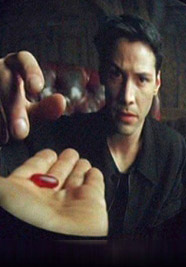

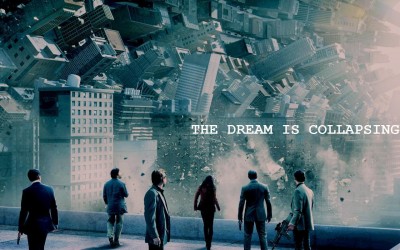

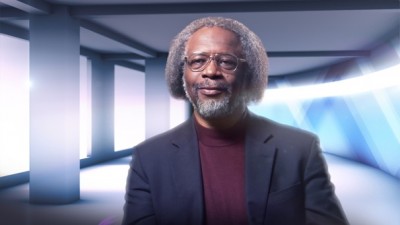
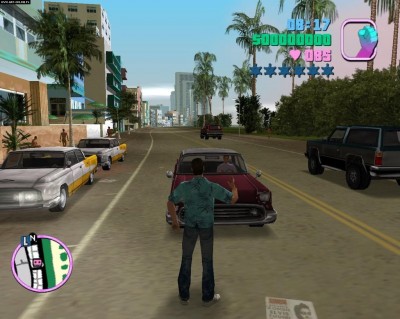
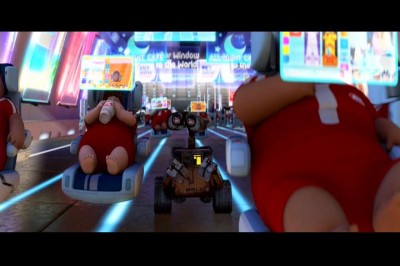




Discussion Area - Leave a Comment